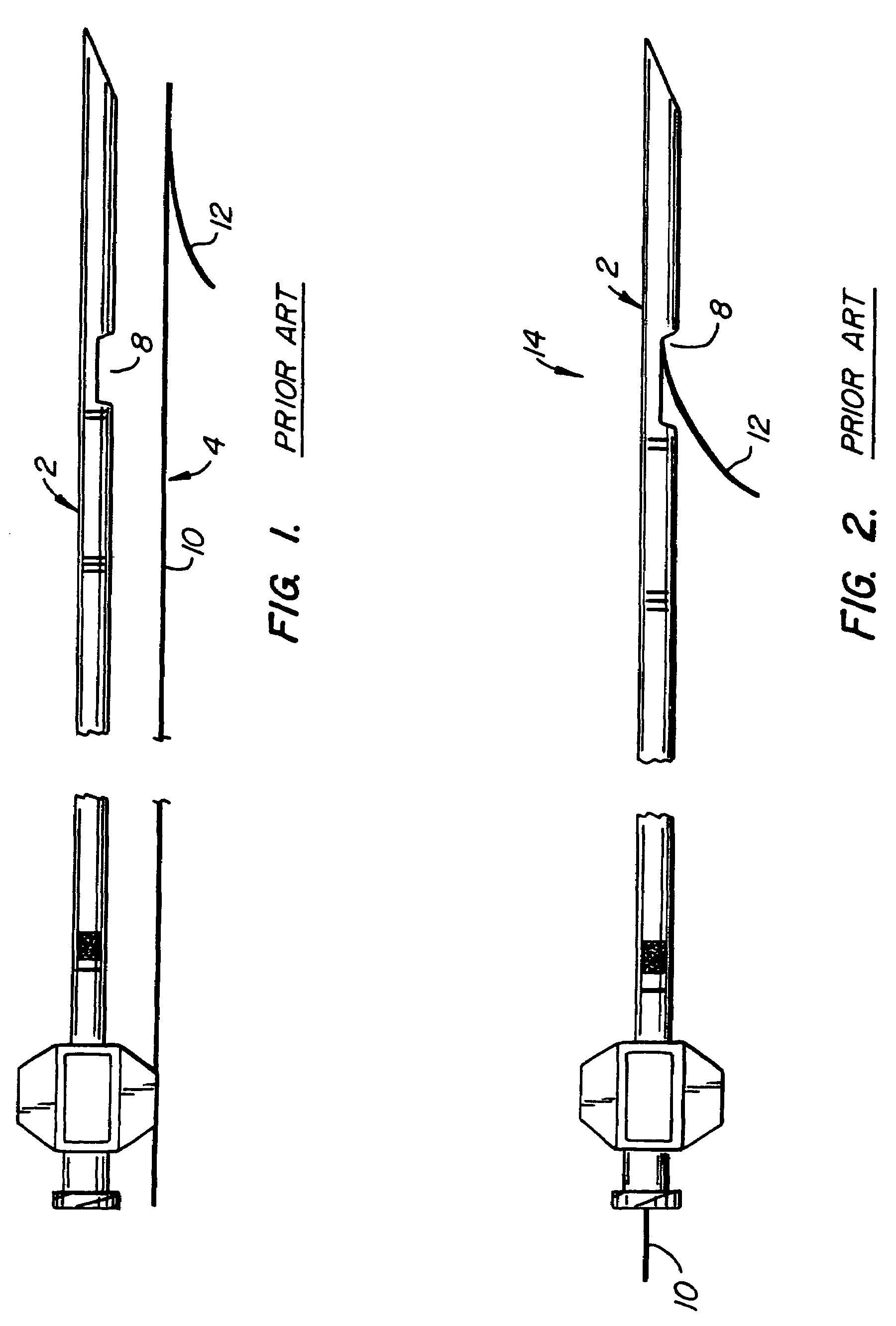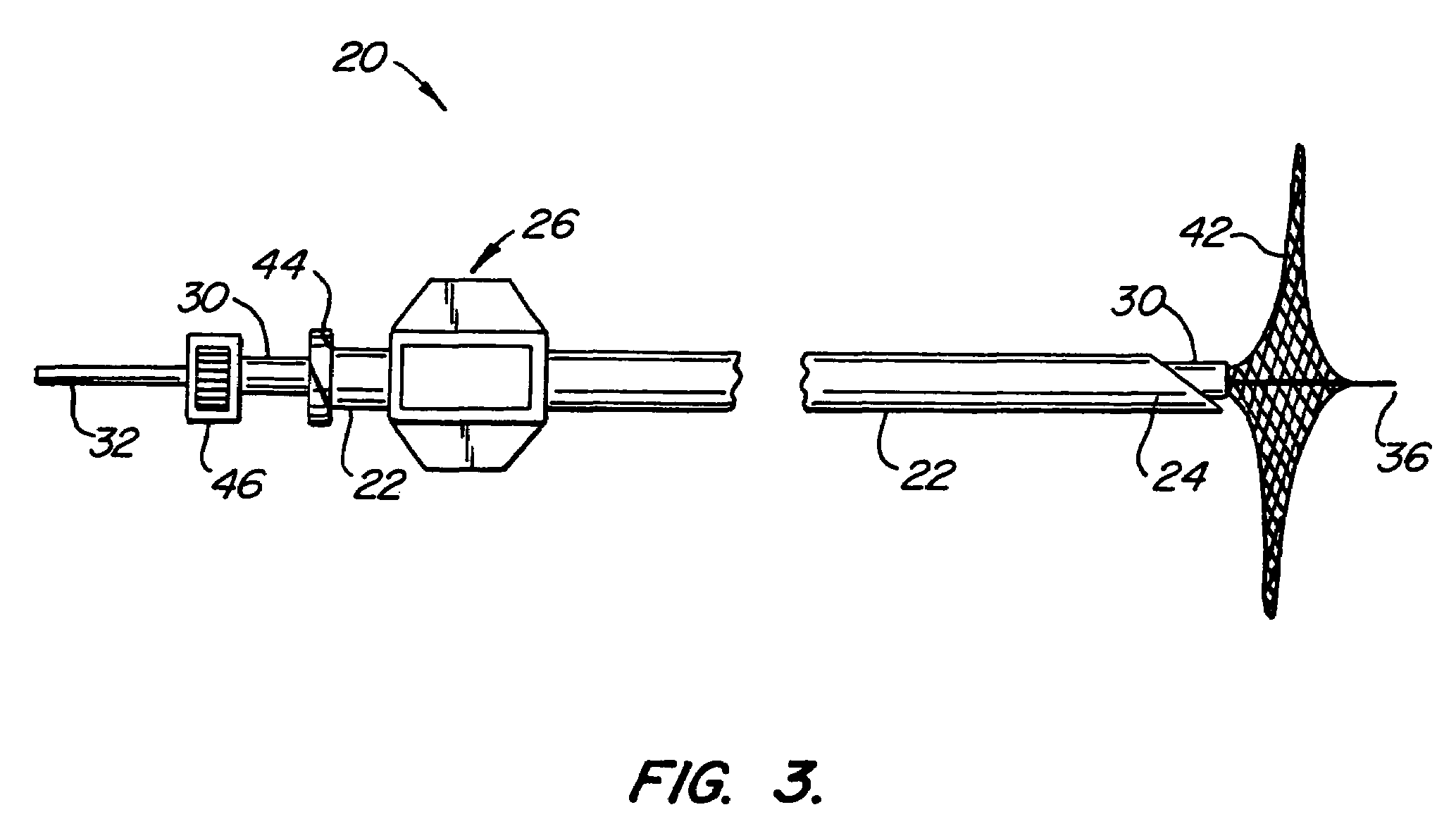Target tissue localization device
a tissue localization and target technology, applied in the field of target tissue localization devices, can solve the problems of misleading indications, difficult to feel devices, and relatively high clip prices, and achieve the effect of large cross-sectional area
- Summary
- Abstract
- Description
- Claims
- Application Information
AI Technical Summary
Benefits of technology
Problems solved by technology
Method used
Image
Examples
Embodiment Construction
[0029]FIG. 1 illustrates a conventional hollow insertion needle 2 placed next to its associated hook wire 4. Insertion needle 2 has a sharpened tip 6 and an opening 8 set back away from tip 6. Hook wire 4 includes a shaft 10 and a barb 12 extending off the distal end of the shaft. Insertion needle 2 is relatively stiff or rigid while hook wire 4 is flexible but resilient. FIG. 2 illustrate the localization assembly 14 made up of the insertion needle 2 and hook wire 4 of FIG. 1 with the barb 12 extending from opening 8. The condition of localization assembly 14 in FIG. 2 is that which would be after tip 6 of insertion needle 2 has been properly placed relative to the target tissue and hook wire 4 has been pulled proximally causing barb 12 to extend from opening 8 and pass into the patient's tissue. As discussed above, this reliance on a thin barb 12 to ensure that assembly 14 does not move after placement is not particularly well-founded; breast tissue is generally quite soft and per...
PUM
 Login to View More
Login to View More Abstract
Description
Claims
Application Information
 Login to View More
Login to View More - R&D
- Intellectual Property
- Life Sciences
- Materials
- Tech Scout
- Unparalleled Data Quality
- Higher Quality Content
- 60% Fewer Hallucinations
Browse by: Latest US Patents, China's latest patents, Technical Efficacy Thesaurus, Application Domain, Technology Topic, Popular Technical Reports.
© 2025 PatSnap. All rights reserved.Legal|Privacy policy|Modern Slavery Act Transparency Statement|Sitemap|About US| Contact US: help@patsnap.com



